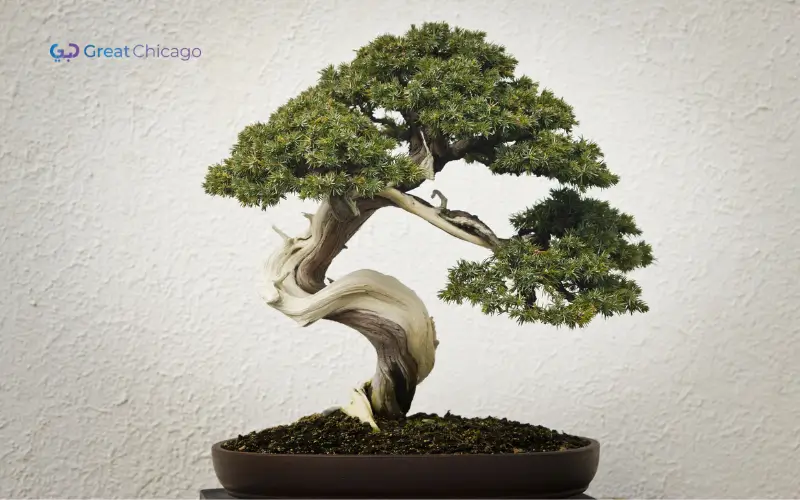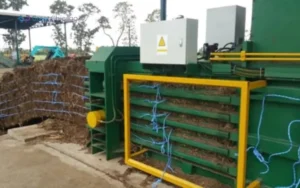Bonsai is just a small tree, grown in a pot and requir ing elaborate work such as clipping and wiring. Popular as a form of gardening, but with origins from Japan, the culture of practicing Bonsai has gone worldwide because of its relaxing and beautifying nature. They are not naturally stunted, or what is known as genetic dwarfs, but ordinary trees that have been raised and cultivated to stay petite.
History and Significance
The concept of growing scaled down trees and plants has been around for over a thousand years starting from China and then copied by the Japanese. Eventually, they evolved into the culture identity signs of balance, harmony, and, in general, mere well-ordered art-images of nature. Bonsai is perceived as a form of artwork than has its living subject Matter, each of the bonsai pruning is viewed to be an aesthetic contribution to the health of the tree.
Choose the Right Bonsai Tree
Types of Bonsai Trees
Before choosing a bonsai tree species of preference, it becomes very important to know the various types. Some of the frequently grown species that require pruning are Ficus, Juniper, and Maple. These species are relatively easy to find and can easily survive in almost any type of conditions meaning new aquarists could easily take care of them.
Choosing the Perfect Specimen
In choosing a bonsai to be taken care of, it is best to get one with good trunk and good branch arrangement. Make sure the roots are not damaged in any way, they are healthy. Equally, the tree should have the right basic structure and these should be properly positioned in a manner that can be fine tuned by future bonsai tree styling sessions.
Essential Tools and Materials
Tools for Bonsai Care
Before proceeding with the shaping and maintenance of your bonsai tree it is important to use the right gardening tools. These are for example; pruning shears, the wire cutters, and the root hooks. Well, high quality bonsai pruning tools are crucial in order to achieve clean cuts, and reduce stress to the tree. Tools allow the right kind of shaping the tree and nurturing its health viewpoint so that it enhances the beauty of the surrounding.
Fertilizer, Shall be Required for Growth
The soil used on the Bonsai plant should be free draining because, the plants may suffer from root rot. Beside, for bonsai tree, there are specially created bonsai tree potting soil for the tree to grow in. You should also feed your bonsai tree using fertilizers after every few months to ensure good health and colours of the leaves.
Caring for Your Bonsai Tree
Watering and Humidity Needs
Another crucial element of care for bonsai is irrigation of the trees and plants which it houses. To maintain the bonsai tree it requires regular water supply but at the same time too much water supply is also dangerous as it increases the chord of root rot. Water the plant regularly but do not over water this means that the soil should be moist but not water logged and between watering should begin to dry a little.
Apply Pruning or Shaping
Usual bonsai realignment methods are obligatory when shaping the tree and inducing new leaps. Pruning means reducing the size of branches and leaves and in this way you steer the plant growth in specific directions. Trimming of the bonsai tree not only assists in contouring the tree into the best image but also allows for prevention of the tree’s growth to a size too big for the pot.
Placement and Lighting
Indoor vs. Outdoor Bonsai
The decision on where to place your bonsai tree, inside the house or outside will depend on the type of tree. Outdoor trees have certain kinds of bonsai tree species which grow well in sunlight and there are other types of trees that grow well indoors. It will assist in determining the best growing conditions that your tree requires for it to be healthy.
Ideal Lighting Conditions
For the Bonsai trees to photosynthesize and therefore be healthy they need light. All bonsai plants need sunlight: Most of the bonsai species should be exposed to 4 to 6 hours of direct daylight. When growing indoor Bonsai , they should be put near the window that faces South so that they can get adequate light. In the case, that natural light is not sufficient, the use of grow lights should be considered.
Repotting and Root Pruning
When to Repot
That means, repotting your bonsai tree is necessary for taking care of the roots as well. Normally, it is advisable for trees to be reposted once in two to three years. During repotting the soil is normally replaced so that fresh soil with good drainage and root bed is provided. For instance, it is also a good time for their roots to be pruned, which helps in minimizing their growth thus producing compact healthy trees.
A Definitive Procedure of Root Pruning
However, to prune the bonsai roots, you need to carefully take the tree out of the pot and then look at the roots. On the roots, do remove any long, circling, or damaged roots using pointed scissors conveniently. While pruning, ensure you size the roots correctly so that you are left with enough roots to support growth of the tree. Plant the tree in fresh soil having a balanced content after pruning and arrange the roots evenly in the pot.
Troubleshooting Common Issues
Dealing with Pests
If not controlled pests will affect the growth of your bonsai tree. Another pest is aphids, scale insect, and spider mite can be managed through the use of insecticide_soap and neem oil which are considered as bonsai plant care treatments. Routine check often come handy in identifying problems while they are still small not fully developed.
Preventing Diseases
I have mentioned here some diseases for example fungal infections that might affect your bonsai especially if you have kept it in a damp or poorly aired environment. Propagating bonsai must be done in a pot that has good drainage and the soil must not be overly wet. Generally prune your plants frequently and look for symptoms of disease such as changes in the colours of the leaves or the presence of mould and destroy.
Seasonal Care Tips
Bonsai Care in Spring
The ‘spring’ season is the right time when most of the decorative bonsai trees start their enhanced growing phase. It is recommended that bonsai tree pruning and shaping should be done in early spring, to promote new growth. It is also a right time for repotting, especially young trees, so that to enhance their ability of absorbing water and nutrients. This is one period that the tree needs some form of fertilization to support its growth adequately.
Summer, Fall, and Winter guidelines
During the summer, direct the watering of the bonsai well towards this end but do not overwater it. It is time to begin reducing irrigation because the tree goes through its dormant period in the fall. During winter bonsai that are planted outside should be protected from harsh weather by adding some part to cover them and water them little as they do not grow much in that period of the year.
Methods of Training and Styling
Wiring and Positioning
One of the procedures frequently used during the bonsai tree styling is wiring. Wire can be used to wrap around those branches and if they are moved slightly, and left to set they will hold the branch to the preferred position. Avoid harming the tree bark, so before tightening the wire again you need to ensure that it doesn’t cut into the tree as it grows.
Developing a Personal Style
As your skill level increases you may start to develop your own training style for a bonsai tree. Don’t be afraid to try new leaves shapes and positions, for example, formal upright, cascading, or slanting. The more you do it, the better you are going to get at portraying and sculpting your bonsai into a piece of art.
Frequently Asked Questions (FAQs)
What a first time bonsai tree owner should get for their first tree?
The Ficus is quite suitable for the beginner level as well as the Juniper variety.
How frequently should one water the bonsai tree?
Prune your bonsai when the top layer moist in the container becomes dry.
Can it be lowered indoors all twelve months of the year?
Surprisingly, yes, of course, there are some kinds of bonsai like Ficus or Chinese Elm that can be kept inside the house all the year round if only they have an opportunity to receive sufficient light and moisture.
What can I do to avoid leaf shedding of my bonsai tree?
First, make sure the bonsai you have gotten gets the correct amount of light, water and humidity.
What are some mistakes people make while taking care of this type of plants?
Some of the mistakes include over watering, using substandard soil and forgetting to prune the plant.








